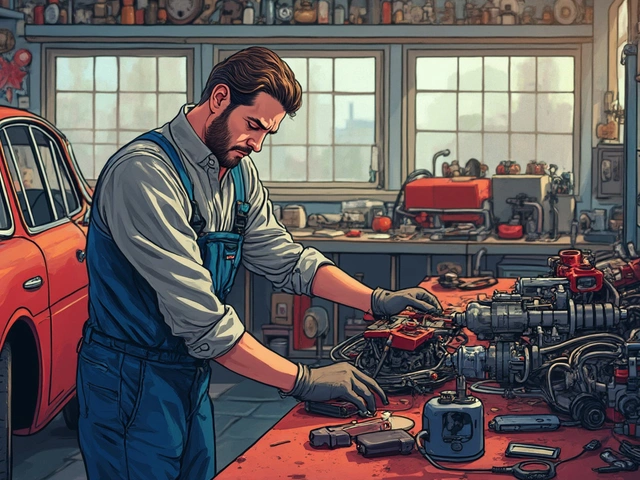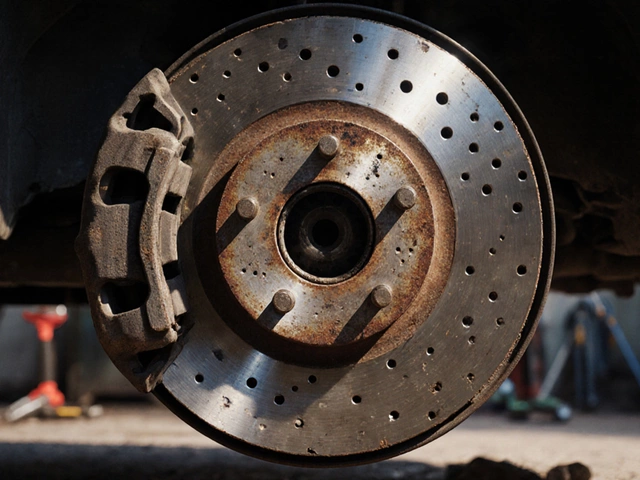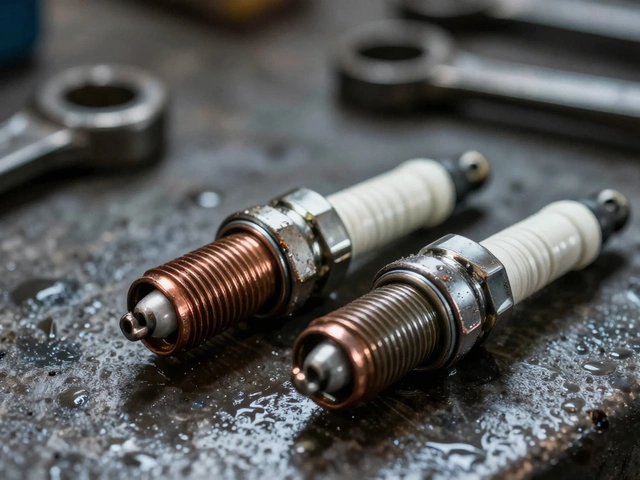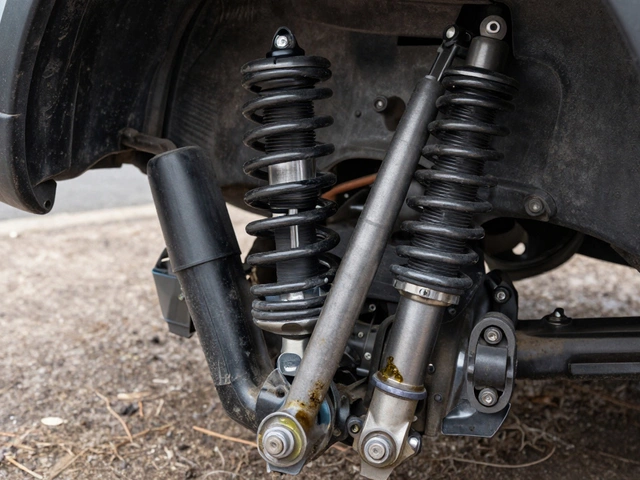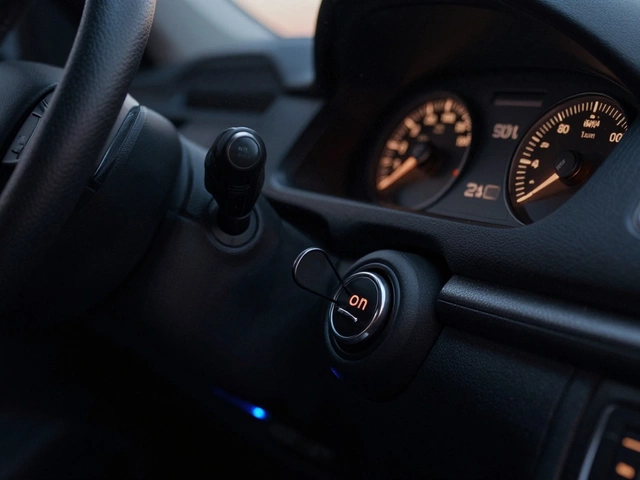You’re driving to work, sipping your coffee, and out of nowhere that temperature gauge spikes up like it’s throwing a tantrum. But what now? Did your radiator betray you, or is your head gasket plotting something worse? There’s a fine line between a quick fix and a wallet-draining nightmare, and knowing which problem you’ve got is everything.
Common Warning Signs: What To Watch For Right Now
It never fails—things only go sideways when you’re in a hurry. One second, your car is purring, and the next there’s white smoke, a weird smell, or a river forming under your engine. When Jareth and I took our old Subaru out last fall, I thought leaking coolant was just a loose hose. Nope, ended up being something nastier—a blown head gasket that nearly killed the engine. That screwdriver in my hand wasn’t enough for that day.
So, here’s what you need to watch for:
- Radiator Issue? Look for coolant pooling under the car, radiator fins rusting out, and low coolant in the reservoir without any white smoke. You might notice the heater inside the car blowing cool air when it’s set to hot. If the radiator cap looks crusty or leaks, it’s another easy clue.
- Suspect the Head Gasket? White exhaust smoke is a big warning. You’ll see milky goop under the oil cap (like a latte gone wrong), or oil floating on top of your coolant. Sometimes, your car’s engine might idle rough, misfire, or refuse to start. If you spot bubbles in the coolant even when the engine is cold, you have a problem deeper than just the radiator.
A recent survey from AAA revealed that one out of five drivers doesn’t check fluids regularly, yet most cooling system failures could be avoided with simple checks. Makes you wonder if everyone should carry a few spare jugs of coolant in their trunk.
How The Radiator and Head Gasket Work (And What Can Go Wrong)
If you’re like me, sometimes you want to know why things go haywire, not just what to fix. The radiator is the heart of your car’s cooling system, a big metal box up front responsible for taking the heat away from the engine. It’s got thin fins and tubes, letting air and coolant do their cooling handshake as you drive. Typical things that knock it out include corrosion (especially if you skip coolant changes), road debris punching holes, or hoses getting brittle with heat and age.
Now, the head gasket—this one’s a beast. It’s sandwiched between the top and bottom of the engine, sealing off the cylinders so oil and coolant never meet. The trouble is, if the gasket goes, all bets are off. You get loss of compression, oil and coolant can mix, and the engine can even overheat if gases from combustion seep into the cooling system. Mechanics see head gaskets blow on high-mileage engines, turbocharged cars (where pressure’s higher), or anytime an engine cooks itself after losing coolant.
I’ll never forget learning that coolant leaks from a rusty radiator might set you back $300 for a replacement, but a head gasket job on a modern car can blast through $2,000 or more, especially if the engine block warps from overheating. So don’t ignore early warning signs. Keeping up with coolant flushes and using the right type of coolant can extend both radiator and head gasket life.

Key Differences: Signs It’s the Radiator or Head Gasket
So you’re staring at a steaming engine and just want someone to tell you what to check first. Here’s where things get really practical. I’ve lined up some clear differences you can spot yourself before calling the shop.
| Symptom | Radiator Issue | Head Gasket Issue |
|---|---|---|
| Coolant on ground | Yes, often at front or near hoses | Rare, unless gasket is gone completely |
| Overheating | Gradual, usually worsens with low coolant | Can spike rapidly; may happen even with normal coolant level |
| White smoke from tailpipe | No, unless coolant is somehow leaking into exhaust via crack | Yes, very common when head gasket fails |
| Milky oil | No effect | Yes, when coolant mixes with oil |
| Heater not working | Common as air enters system from leak | Possible but typically with other severe symptoms |
| Bubbles in radiator or reservoir | No; only if air trapped from poor bleeding | Yes, combustion gases force bubbles when running |
| Visible damage | Cracked or corroded metal/plastic parts | Hidden; engine must come apart to see |
If you ever hear a hissing noise after shutting the engine off, check for leaks around the radiator first—this is a classic sign of hot coolant escaping. Some folks use a pressure tester (these run about $40–$60) to pump up the system and watch for drops or see leaks form. That tool can point you straight to a leaky radiator or a busted hose. But with a head gasket, you’ll need more detective work.
Auto parts stores now rent combustion leak testers. You put a special fluid above the radiator neck; if the gasket is leaking, exhaust gases will turn the chemical in the tester from blue to yellow. If you’re seeing this color change, don’t drive any farther!
DIY Diagnosis: Step-by-Step Tips At Home
I know not everyone has a toolbox the size of a small shed, or likes grease under their fingernails, but you’d be surprised by what you can check in your own driveway. Here’s how you can narrow down what’s actually broken.
- Check Coolant Level and Look For Leaks: Pop the hood (wait until it’s cool—no one needs a steam burn!). Top up coolant if it’s low, then look underneath for drips. Run the engine and see if that leak gets worse.
- Look for White Smoke on Startup: With the car cold, get a friend to start it while you watch the exhaust. A few puffs of white are normal on cold mornings, but thick, sweet-smelling smoke is a red flag for a blown head gasket.
- Inspect the Oil Cap and Dipstick: Pull off the oil cap and check the dipstick. If you see that chocolate milkshake look, coolant and oil are mixing—a sign the gasket is toast.
- Check for Milky Buildup or Oil in Coolant: Open the radiator cap (again, only when cool!). If the coolant looks like a science experiment—oily or milky—again, likely the gasket.
- Watch the Temp Gauge: Note how quickly the engine overheats. If it rises slowly, you’re probably dealing with the radiator. If it pegs in minutes and you haven’t lost any coolant, the gasket is a prime suspect.
- Test Pressure and Bubbles: Rent a cooling system pressure tester or a combustion leak tester, as mentioned above, and double-check your findings. These tests are pretty foolproof.
If your diagnosis still isn’t clear, drive to the shop—but keep the heater on full blast. This dumps extra heat from the engine (it works, but the family may not like you for it in summer). Prevent emergencies by scheduling regular coolant flushes every 30,000–50,000 miles, or as advised in your car’s manual—a simple thing that prevents 60% of catastrophic cooling failures according to trusted data from the Car Care Council.

When To Fix Yourself Or Call In The Pros
If you discover the radiator is leaking, swapping it out is often within reach for anyone with a free afternoon and basic wrenches. Drain old coolant, unhook hoses, unbolt the old radiator, and bolt the new one in—YouTube is full of step-by-step guides. Use fresh coolant, and if your car has plastic radiator tanks, check them: they’re known to crack from heat cycling after 8–10 years.
A head gasket is another story. Unless you’ve done big engine jobs before and have the patience of a saint, a blown head gasket is for the pros. Shops need special tools and knowledge—mismatch one bolt torque and you could do more damage. Most bills for a gasket job at repair shops run from $1,500 to $3,000 depending on the vehicle and region. If your car is older or not worth a ton, sometimes it’s smarter to patch things and stagger along until it’s time for a replacement vehicle.
And here’s a tip: if you ever buy a used car, check for these head gasket warning signs before handing over your cash. A seller might “fix” overheating by topping up coolant, but it won’t last. Always test drive and look for white smoke, bubbling in the radiator, or that infamous milky oil before you buy.
In the end, spending a few minutes under the hood when things go weird can mean the difference between a $70 radiator hose and a $2,500 breakdown. Don’t put it off—your engine (and wallet) will thank you for it.

